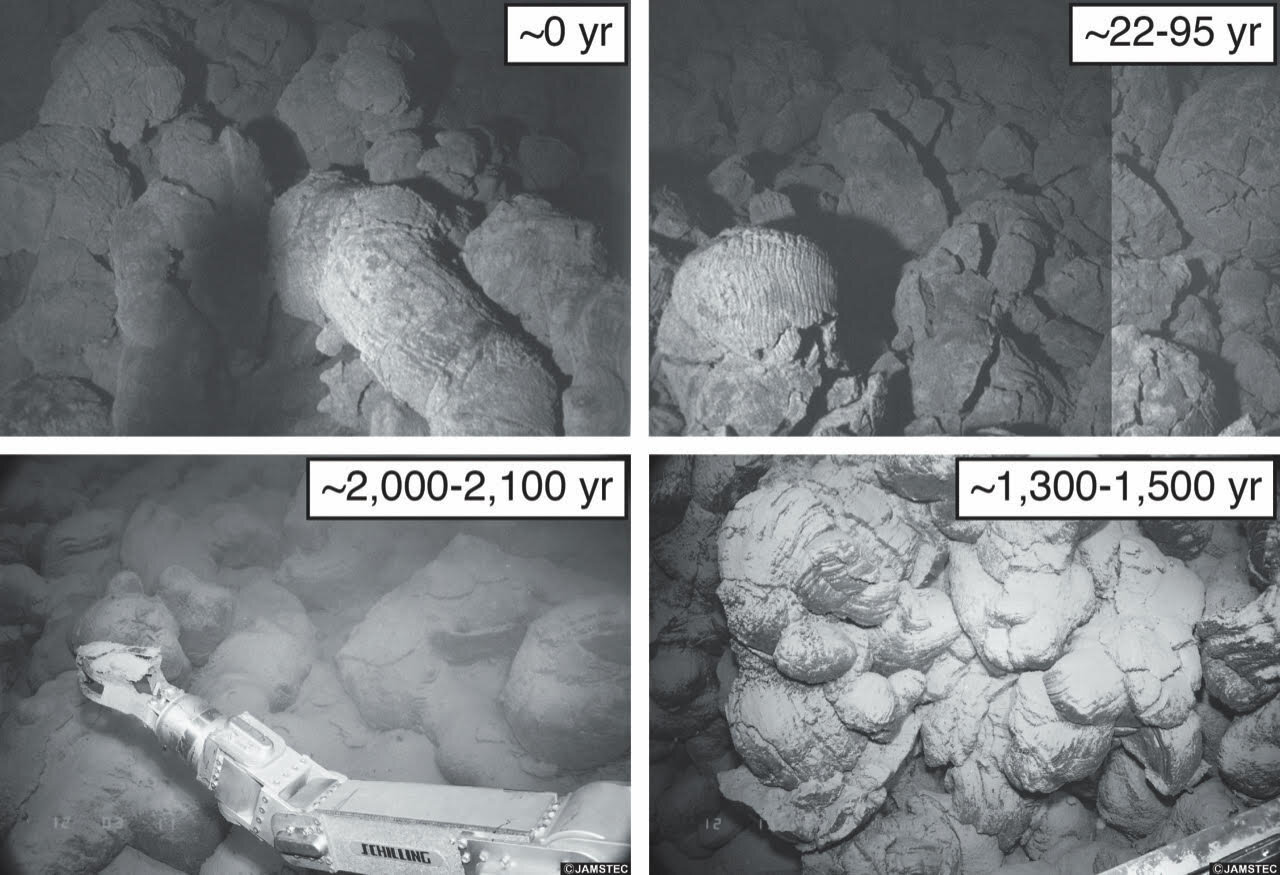Kamaʻehuakanaloa (formerly Lōʻihi Seamount), a submarine Hawaiian volcano located about 20 miles off the south coast of the Big Island of Hawai’i, has erupted at least five times in the last 150 years, according to new research led by Earth scientists at the University of Hawai’i at Mānoa. For the first time, scientists were able to estimate the ages of the most recent eruptions of Kamaʻehu, as well as the ages of eight additional older eruptions at this volcano going back about 2,000 years. Their findings were published recently in Geology.
Hawaiian volcanoes are thought to transition through a series of growth stages. Kamaʻehu is currently in the earliest submarine “pre-shield” stage of growth, whereas the active neighboring volcano Kīlauea is in its main shield-building stage.
“Kamaʻehu is the only active and exposed example of a pre-shield Hawaiian volcano,” said Aaron Pietruszka, lead author of the study and associate professor in the Department of Earth Sciences at the UH Mānoa School of Ocean and Earth Science and Technology (SOEST). “On the other Hawaiian volcanoes, this early part of the volcanic history is covered by the great outpouring of lava that occurs during the shield stage. Thus, there is great interest in learning about the growth and evolution of Kama’ehu.”
Previously, the only known and confirmed eruption of Kamaʻehu was the one that occurred in 1996, an event that was only discovered because it coincided with a large swarm of earthquakes that were detected remotely by seismometers on the Big Island.
“Seismometers can only be used to detect the ongoing active eruptions of submarine volcanoes because earthquakes are transient,” said Pietruszka. “In order to determine the ages of older eruptions at Kamaʻehu, we took a different approach. We used a mass spectrometer to measure tiny amounts of the isotope radium-226 in pieces of quenched glassy lava that were sampled from the seafloor outcrops of Kamaʻehu using a submersible.”
2023-08-04 01:24:03
Article from phys.org
